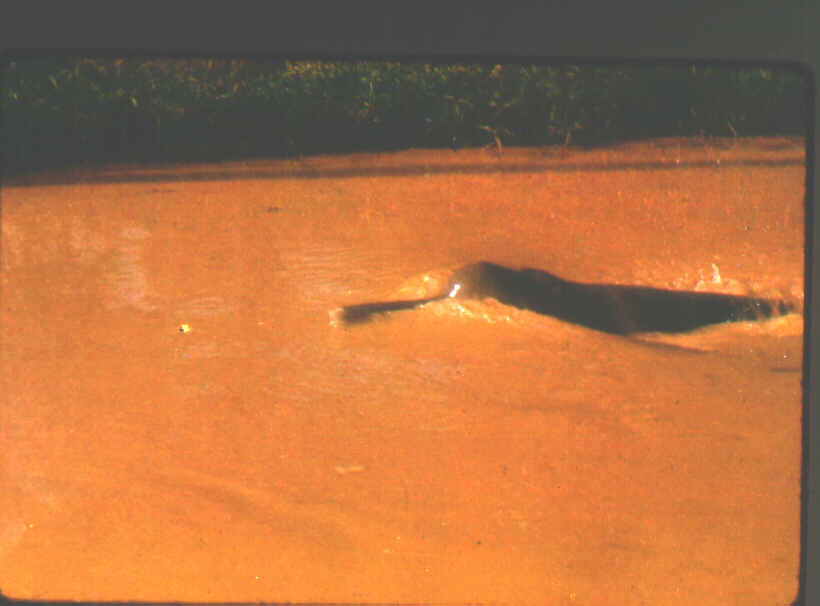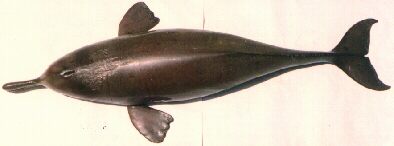
The River Dolphin of Ganges River: The Susu

Classification
Common Name:
Susu or Hihu
Scientific
Name: Platanista gangetica
Phylum:
Chordata
Class:
Mammalia
Order:
Cetacea
Family:
Platanistidae
Habitat - Geographic Range
Oriental. The Ganges river dolphin is found in India, Nepal(Karnali), Bhutan, and Bangladesh in the muddy waters of Ganges, Brahmaputra(Assam - Kulsi and Subansiri), Meghna, Karnaphuli, and Hoogli river systems.


Physical Characteristics
Mass: maximum 100kg
The Ganges river dolphin ranges from 2.3 to 2.6 meters in length. The tail fluke is on average 46cm in width. Females are larger than males.The color of this dolphin varies from lead-colored to black. The undersides are lighter in color. The rostrum is 18 to 21cm in length and the forehead is steep and rises abruptly from the base of the snout. The dorsal fin is rudimentary and ridge-like, and the ends of the pectoral fins are squared instead of tapered. The neck is visibly constricted and the blowhole is a longitudinal slit. There are 28 to 29 teeth on either side of the jaw.

The eye and optic nerve of the Ganges river dolphin are degenerate. The eye lacks a lens and is therefore incapable of forming images on the retina. However, it functions in light-detection. It is believed that the lack of a true visual apparatus in the river dolphin is related to its habitat; the water in which it lives is so muddied that vision in essentially useless.
Food Habits
Plantanista gangetica probes the mud in river bottoms with its long snout in search of shrimp and fish.
Reproduction
Young are born year-round in this species, but most births occur between October and March. A significant birth peak takes place in December and January, at the beginning of the dry season. Gestation lasts eight to nine months. The young are weaned and solitary before they are one year old. They reach sexual maturity in ten years, and individual dolphins studied have shown that they can live for about 35 years.
Behavior
Although schools of three to ten individuals have been reported in particular parts of river systems, these animals are not gregarious and spend most of their time feeding and travelling solitarily. They swim all day and all night and continually emit sounds. One study showed that 81% of the sounds are echolocation and 5% communication. Echolocation is used by the dolphins in foraging and it helps these animals to sense objects; they can detect a wire one millimeter in diameter.
The Ganges river dolphin is found only in fresh water and may migrate locally to tidal waters during the monsoon season. During the hot, dry season the species disappears from areas of river systems where temperature, salinity, food limitations may cause conditions to be too severe.
Conservation/Biodiversity
Status: endangered.
This animal is hunted both for its meat, which is eaten, and for its oil, which is used to fuel lamps, rheumatism and for the preparation of bait for the catfishes, Clupisoma garua(Garuah fish or Neria). Other sources of threat include fishing nets, in which the river dolphin often becomes tangled when it migrates to tidal waters in the monsoon, and dams, which prevent the river dolphin from making its local migrations and separate potentially breeding populations of animals from one another.

River
dolphin being slaughtered near Dhubri, Brahmaputra
A big percentual
of the survival of the species rests in the hands of fishermen, who are
unfortunately, poor and illiterate. Any steps directed to save the dolphins
should take into consideration their economic status and give them an alternate
livelihood.

![]()

![]()